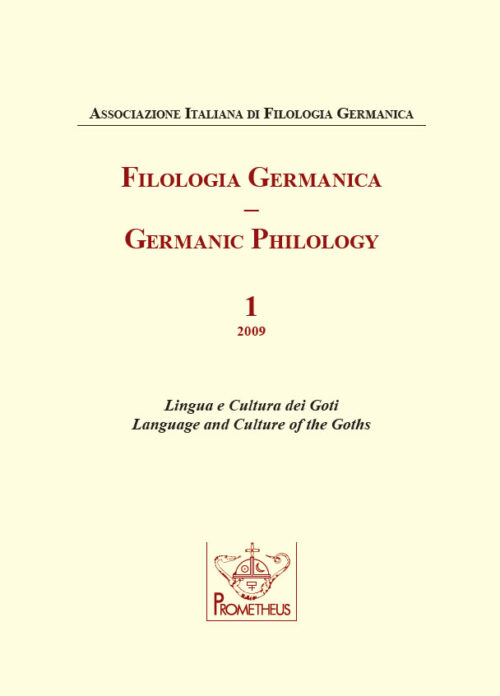Il commento dell’Ambrosiaster e la traduzione gotica delle Epistole paoline
Abstract
The Gothic translation of the Bible contains a number of readings which originated in the later stages of its transmission. Some of these readings may go back to the Latin commentary to St Paul’s Epistles attributed to the so-called Ambrosiaster, as it was already surmised by G. W. S. Friedrichsen in The Gothic Version of the Epistles (London 1939). The influence of the Ambrosiaster mainly concerns the lexical choices and betrays a reviser’s attempt to deal with difficult passages either by means of a periphrasis or the addition of clarifying words. These changes and additions overlap, in a number of cases, with the commentary by the Ambrosiaster. In 1Tim 1,19, for instance, Greek ἐναυάγησαν ‘they made shipwreck’ corresponds to the Gothic phrase naqadai waurþun ‘they got naked’, which corresponds verbatim with the Ambrosiaster “naufragi facti sunt, id est nudi veritate”. There are also instances in which a marginal gloss was added by a reviser who was probably collating the Gothic text with the Latin commentary. In Eph 2,3, for instance, the Greek φύσει τέκνα ὀργῆς ‘by nature the children of wrath’ is rendered by the Gothic wistai barna hatize and glossed, in Ambrosianus A, with ussateinai urrugkai ‘of evil origin’. The Ambrosiaster comments on this passage by quoting Isaiah’s words “semen pessimum” (Is 1,4), from which the Gothic gloss ultimately stems. This essay takes into examination a number of passages of the Gothic version of the Pauline Epistles which likely underwent a revision inspired by the Ambrosiaster. The influence of the Latin commentary and the ensuing divergent readings are evaluated in the light of the revision process which the Gothic Bible underwent up to the sixth century.
Pubblicato
Fascicolo
Sezione
Licenza

Questo lavoro è fornito con la licenza Creative Commons Attribuzione - Condividi allo stesso modo 4.0.
CC-BY-SA



